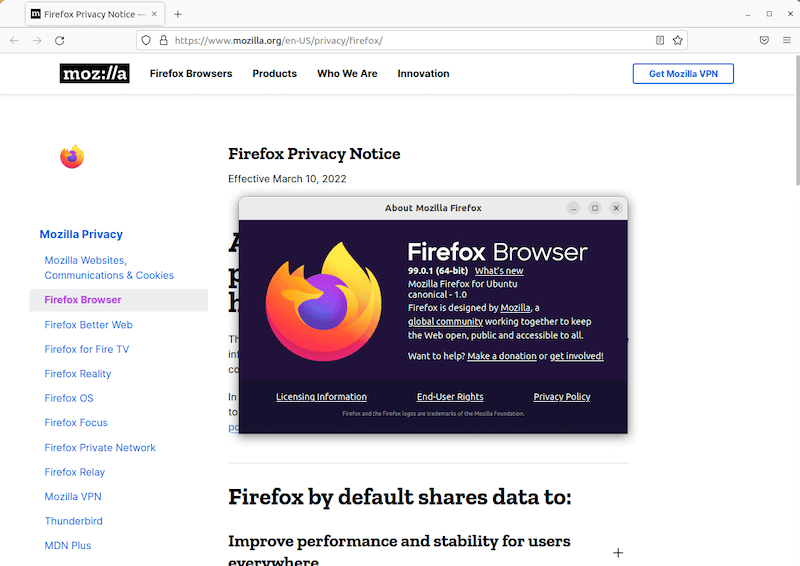How To Install Firefox on AlmaLinux 9

AlmaLinux 9, a robust and reliable RHEL-based distribution, has gained popularity among Linux enthusiasts and system administrators. As users transition to this powerful operating system, one of the first tasks is often installing a reliable web browser. Firefox, known for its speed, security, and customization options, stands out as a top choice. This comprehensive guide will walk you through various methods to install Firefox on AlmaLinux 9, ensuring you have the best browsing experience tailored to your needs.
Whether you’re a seasoned Linux user or new to AlmaLinux, this article will provide you with clear, step-by-step instructions for installing Firefox using different package management systems. We’ll explore the pros and cons of each method, troubleshoot common issues, and offer post-installation tips to optimize your Firefox experience on AlmaLinux 9.
Prerequisites and Preparation
Before diving into the installation process, it’s crucial to ensure your system is ready. Follow these steps to prepare your AlmaLinux 9 environment:
- Verify AlmaLinux 9 Installation: Confirm you’re running AlmaLinux 9 by checking the system information:
cat /etc/os-release - Ensure Administrative Access: You’ll need sudo privileges to perform installation tasks. Verify your access by running:
sudo whoamiIf this command returns “root”, you have the necessary permissions.
- Update System Repositories: Keep your system up-to-date by running:
sudo dnf updateThis command synchronizes your local package database with the remote repositories and installs any available updates.
- Install Essential Tools: Some installation methods may require additional tools. Install them with:
sudo dnf install wget tarThese utilities will help with downloading and extracting files during the installation process.
With these prerequisites in place, you’re now ready to explore the various methods of installing Firefox on AlmaLinux 9.
Methods to Install Firefox on AlmaLinux 9
AlmaLinux 9 offers multiple ways to install Firefox, each with its own advantages. We’ll cover four primary methods: using the default package manager (DNF), Flatpak, Snap, and manual installation from Mozilla’s binary package.
1. Installing Firefox Using the Default Package Manager (DNF)
DNF (Dandified Yum) is the default package manager for AlmaLinux 9. It’s a powerful tool that handles dependencies and keeps your software up-to-date. Here’s how to use DNF to install Firefox:
- Open a terminal window.
- Run the following command:
sudo dnf install firefox - When prompted, enter ‘y’ to confirm the installation.
- Wait for the installation to complete. DNF will automatically handle any dependencies.
To verify the installation, run:
firefox --versionThis command should display the installed Firefox version.
Pros of using DNF:
- Simple and straightforward installation process
- Automatic dependency management
- Easy to update through regular system updates
Cons of using DNF:
- The version in the official repositories may lag behind the latest Firefox release
- Limited control over installation location and configuration
2. Installing Firefox Using Flatpak
Flatpak is a universal package management system that provides sandboxed applications. It’s an excellent option for those who want the latest Firefox version with enhanced security. Here’s how to install Firefox using Flatpak:
- First, enable Flatpak on AlmaLinux 9:
sudo dnf install flatpak sudo flatpak remote-add --if-not-exists flathub https://flathub.org/repo/flathub.flatpakrepo - Install Firefox via Flatpak:
flatpak install flathub org.mozilla.firefox - When prompted, enter ‘y’ to proceed with the installation.
- Once installed, launch Firefox with:
flatpak run org.mozilla.firefox
Advantages of using Flatpak:
- Access to the latest Firefox version
- Enhanced security through sandboxing
- Consistent experience across different Linux distributions
Potential drawbacks:
- Larger installation size due to bundled dependencies
- Slightly different file system access compared to native installations

3. Installing Firefox Using Snap
Snap is another universal package management system, developed by Canonical. While not pre-installed on AlmaLinux 9, it’s easy to set up and use. Follow these steps to install Firefox using Snap:
- Enable Snap on AlmaLinux 9:
sudo dnf install epel-release sudo dnf install snapd sudo systemctl enable --now snapd.socket sudo ln -s /var/lib/snapd/snap /snap - Install Firefox via Snap:
sudo snap install firefox - Once installed, you can launch Firefox by typing ‘firefox’ in the terminal or using the application menu.
To verify the Snap installation, run:
snap list | grep firefoxPros of using Snap:
- Automatic updates to the latest Firefox version
- Consistent packaging across different Linux distributions
- Sandboxed for improved security
Cons of using Snap:
- Slower startup times compared to native installations
- Increased disk usage due to bundled dependencies
4. Installing Firefox Manually from Mozilla’s Binary Package
For users who prefer complete control over their Firefox installation or need the absolute latest version, manual installation from Mozilla’s binary package is an option. Here’s a step-by-step guide:
- Download the latest Firefox tarball:
wget https://download.mozilla.org/?product=firefox-latest&os=linux64&lang=en-US -O firefox.tar.bz2 - Extract the tarball:
tar xjf firefox.tar.bz2 - Move the extracted folder to /opt:
sudo mv firefox /opt/firefox - Create a symbolic link to make Firefox accessible system-wide:
sudo ln -s /opt/firefox/firefox /usr/local/bin/firefox - Create a desktop entry for easy access:
sudo nano /usr/share/applications/firefox.desktopAdd the following content:
[Desktop Entry] Name=Firefox Comment=Web Browser Exec=/opt/firefox/firefox %u Terminal=false Type=Application Icon=/opt/firefox/browser/chrome/icons/default/default128.png Categories=Network;WebBrowser; MimeType=text/html;text/xml;application/xhtml+xml;application/xml;application/vnd.mozilla.xul+xml;application/rss+xml;application/rdf+xml;image/gif;image/jpeg;image/png;x-scheme-handler/http;x-scheme-handler/https; StartupNotify=true - Update the desktop database:
sudo update-desktop-database
To verify the installation, run:
/opt/firefox/firefox --versionAdvantages of manual installation:
- Access to the latest Firefox version directly from Mozilla
- Complete control over installation location and configuration
- Easy to maintain multiple Firefox versions side by side
Potential drawbacks:
- Manual update process required
- No automatic dependency management
Post-installation Configuration
After successfully installing Firefox on AlmaLinux 9, consider these post-installation steps to enhance your browsing experience:
Setting Firefox as the Default Browser
To make Firefox your default web browser, run:
xdg-settings set default-web-browser firefox.desktopAdding Language Packs
If you need Firefox in a different language, you can install language packs. For example, to add Spanish support:
- Open Firefox and go to the menu (three horizontal lines in the top-right corner)
- Select “Add-ons and themes”
- Click on “Languages” in the left sidebar
- Find and install your desired language pack
Alternatively, you can install language packs via the command line:
sudo dnf install firefox-langpack-esReplace ‘es’ with your desired language code.
Troubleshooting Common Issues
Even with careful installation, you might encounter some issues. Here are solutions to common problems:
Resolving Dependency Issues
If you encounter dependency problems during installation, try the following:
- Update your system:
sudo dnf update - Install missing dependencies manually. For example:
sudo dnf install libXt - If issues persist, check the system logs:
journalctl -xeThis command displays the most recent system logs, which may provide clues about the installation problem.
Fixing Permission Issues
For manual installations, you might encounter permission problems. Ensure proper ownership and permissions:
sudo chown -R root:root /opt/firefox
sudo chmod 755 /opt/firefoxEnsuring Proper Sandboxing
For Flatpak or Snap installations, ensure the respective daemon is running:
For Flatpak:
systemctl status flatpak-system-helperFor Snap:
systemctl status snapdIf either service is not running, start it with:
sudo systemctl start [service-name]Congratulations! You have successfully installed Firefox. Thanks for using this tutorial for installing the Firefox browser on your AlmaLinux 9 system. For additional help or useful information, we recommend you check the official Firefox website.